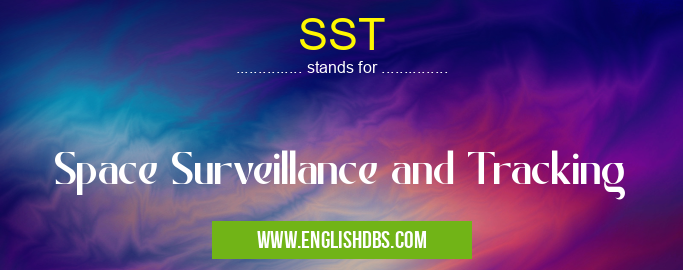What does SST mean in UNCLASSIFIED
SST stands for Space Surveillance and Tracking. It is a system used to monitor and track objects in orbit around Earth. This system is used to provide timely and accurate information on the location, movement, and characteristics of space objects to various users, including government agencies, scientists, and the general public.

SST meaning in Unclassified in Miscellaneous
SST mostly used in an acronym Unclassified in Category Miscellaneous that means Space Surveillance and Tracking
Shorthand: SST,
Full Form: Space Surveillance and Tracking
For more information of "Space Surveillance and Tracking", see the section below.
What is Space Surveillance and Tracking (SST)?
SST is a critical capability for ensuring the safety and sustainability of space activities. It provides information that can be used to:
- Avoid collisions: SST can detect and track potential collisions between satellites and other objects in orbit. This information can be used to maneuver satellites to avoid collisions and prevent damage.
- Monitor space debris: SST can track space debris, which is a growing problem in orbit. This information can be used to assess the risk of debris collisions and develop strategies to mitigate the risks.
- Support scientific research: SST can be used to support scientific research on space objects. This information can be used to study the behavior of satellites and other objects in orbit, and to develop new technologies for space exploration.
Essential Questions and Answers on Space Surveillance and Tracking in "MISCELLANEOUS»UNFILED"
What is Space Surveillance and Tracking (SST)?
SST refers to the systematic collection and analysis of data to detect, track, catalog, and characterize satellites and other objects in Earth's orbit. It involves the use of various sensors, including radar, telescopes, and optical tracking systems, to monitor the movement and behavior of objects in space.
Why is SST important?
SST is crucial for several reasons:
- Avoiding Collisions: By tracking objects in space, SST helps prevent collisions between satellites and other spacecraft, which can lead to costly damage or loss.
- Space Traffic Management: SST provides situational awareness of the space environment, facilitating the coordination and management of satellite operations to prevent interference or congestion.
- Protection of Critical Infrastructure: SST helps identify and monitor potential threats to space-based assets, such as satellites used for communication, navigation, and defense.
- Scientific Research: SST data contributes to the understanding of the orbital environment, debris population, and space weather, supporting scientific research and exploration.
How does SST work?
SST involves a multi-layered approach:
- Sensors: Ground-based radar, optical telescopes, and space-based sensors detect and track objects in orbit.
- Data Collection: Sensor data is collected and processed to generate position, velocity, and other characteristics of space objects.
- Cataloging: Object data is stored in databases and catalogs, which provide a comprehensive inventory of satellites and other space debris.
- Analysis: Experts analyze SST data to identify potential collision risks, track trends, and assess the orbital environment.
What is the difference between SST and SSA?
SST is primarily focused on surveillance and tracking of space objects, while Space Situational Awareness (SSA) encompasses a broader range of activities, including SST, as well as the assessment of potential threats, determination of collision risks, and dissemination of alerts.
Final Words: SST is a vital capability for ensuring the safety and sustainability of space activities. It provides information that can be used to avoid collisions, monitor space debris, and support scientific research. As the number of objects in orbit continues to grow, SST will become increasingly important in ensuring the safety and sustainability of space activities.
SST also stands for: |
|
| All stands for SST |
